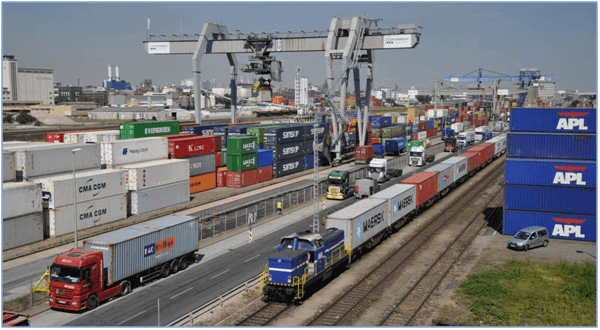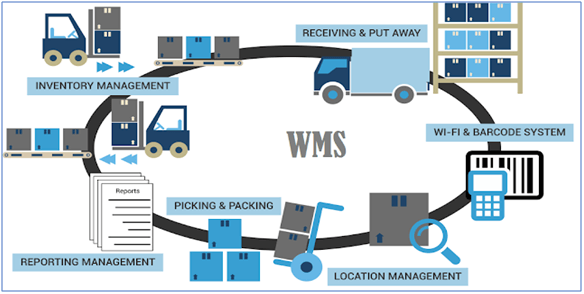Efficient management is the key to success, especially in supply chain management. There are various factors involved in effective logistics management. For example, automation and perfect coordination are always a scope for improvising the process. When your business witnesses growth, you must find ways to streamline logistics planning processes for improving output. Here are some practices to manage logistics more effectively.

Table of Contents
Proper Planning
Efficient logistics is about planning. It involves procuring the goods, storage facilities, and delivery of products to the final destination. The purpose of planning is to attain maximum work in the least possible time, as well as aim at maximizing the profits. A good logistics manager will, therefore, make sure to plan well ahead in order to eliminate any delays in the supply chain. However, one must be prepared for the unforeseen circumstances as well. These situations can be related to:
• The products (sourcing, purchasing and production)
• Unavailability of the transportation
• Any internal issue in the organization
Adopting Automation
In the age of automation, technology plays a major role in increasing the efficiency of an organization. There are number of ways you can automate the logistics process, including tracking and monitoring each delivery.
1. Valuable software that can be deployed in the logistics process.
Business process software like SAP or ERP can be integrated that provides timely updates regarding the movement of goods. The operator and the client will get details regarding:
• The goods that are dispatched from the supplier
• Procurement of the goods at the warehouse
• Delivery of the goods at the destination
This saves a considerable amount of time because manual interference is eliminated. Moreover, accurate tracking help in improving overall process management.
2. Robots for Inbound and Outbound Logistics
Robots perform functions at the request from an order fulfillment system. The order process automatically notifies robots in warehouses and triggers the flow of processes. Robotics Technology is not isolated to warehouse pulling for outbound logistics. They can be used to manage inbound and outbound processes and strategy. Through trends in automation and robotics, supply chain companies will have the tools and resources necessary to ramp up throughput and decrease product cycle from order to delivery.

3. Internet of Things (IoT)
IoT is the network of physical devices embedded with electronics, software, sensors, actuators, and connectivity which enable these things to connect and exchange data, creating opportunities for more direct integration of the physical world into computer-based systems, resulting in efficiency improvements, economic benefits, and reduced human exertions. The IoT can assist in the integration of communications, control, and information processing across various transportation systems. Application of the IoT extends to all aspects of transportation systems (i.e. the vehicle, the infrastructure, and the driver or user). Dynamic interaction between these components of a transport system enables inter and intra vehicular communication, smart traffic control, smart parking, electronic toll collection systems, logistic and fleet management, vehicle control, and safety and road assistance.In logistics and fleet management, IoT platform can continuously monitor the location and conditions of cargo and assets via wireless sensors and send specific alerts when management exceptions occur (delays, damages, thefts, etc.).
4. Autonomous Vehicles/ Trucks
With advances in technology and the IoT, most major companies, including Walmart, Google, and Amazon, have launched autonomous vehicle and truck pilot programs. These driverless vehicle programs will give supply chains access to a new inexhaustible resource for moving products, overcoming the challenges inherent in the driver shortage and capacity crunch. Autonomous vehicles have control systems that are capable to analysing sensory data to distinguish between different cars on the road, which is very useful in planning a path to the desired destination.
Value Relations
The team is an essential aspect of an organization that is responsible for the growth. Whether it’s the delivery guy or the warehouse manager, everyone should be professional in their respective field of work. Regular training workshops keep the employees updated with the latest trends in the logistics industry. This helps in increased efficiency and satisfaction of the clients. Logistics manager with impeccable interpersonal skills is crucial for the organization. There are times when the things don’t work according to the plan. In this situation, instead of panicking, you need a reliable person who can sort out the issues with utmost efficiency. Moreover, the manager should have authoritative contacts in the industry. This can be beneficial in tapping the business opportunities.
Warehouse Management System
Effective logistics management is incomplete without proper warehouse management. A warehouse management system (WMS) is a software application, designed to support and optimize warehouse functionality and distribution centre management.
A WMS uses a database configured to support warehouse operations, containing variety of standard warehouse elements such as individual stock keeping units (SKUs) that are handled and stored, e.g., weight, dimensions, case pack, automatic ID labels (bar codes), and inventory by location with manufacture date. This includes warehouse storage locations, and dock doors (e.g., individual number), as well as expected labour productivity rates by function or activity (e.g., cases picked per man-hour).
The flow chart below shows the features of WMS.

Efficient Transportation System
Transportation is a key factor in determining an organization’s overall logistics costs. Companies are constantly trying to figure out the most efficient and cost-effective way to get their products from Point A to Point B. What factors and trends determine the best way to deliver your products? What factors influence freight demands?
Some factors in a company’s decision making process on transportation demand include determining the best delivery route, cost-effective packaging that ensures low investment and safety of goods, as well as lead time in order to provide with different modal options such as rail or barge which could be much more cost effective. Other factors include the distance from customers to warehouse, or the types of products and services that are critical logistics which affect delivery and quality of products.

Performance Measurement and Improvements
Logistics network optimization is incomplete without integrating performance measurement, analysis, and feedbacks. When you deploy new strategies in the system, you need to measure the output as it affects behavior that impacts supply chain performance. Measurement tools and software should be integrated that easily determines and classifies the information as per the requirement. Some of these metrics are as follows:
• Cycle time metrics (e.g., production cycle time and cash-to-cash cycle)
• Cost metrics (e.g., cost per shipment and cost per warehouse pick)
• Service/quality metrics (on-time shipments and defective products)
• Asset metrics (e.g., inventories)
Global logistics metrics and key performance indicators (KPIs) are being developed and implemented to score-card LSP (Logistics Service Providers) performance and align payment terms to these metrics.
Generous feedbacks help in improvising. The ideas and suggestions of the employees should be recorded periodically. This ensures that you generate a pool of ideas and at the same time reveals any flaws in the system.
Conclusion
In today’s highly competitive environment, many companies are going global to acquire market share and take advantage of higher production and sourcing efficiencies. A key determinant of business performance is the role of the logistics function in ensuring the smooth flow of materials, products and information throughout the company’s supply chains. To compete effectively, companies must recognize the strategic importance of logistics planning; adapt the latest technology and innovative approach. The best practices of companies with strategic logistics will improve the efficiency of operations, ensuring customer satisfaction, and increase productivity.
References
Mohamed Hardi Bin Abdullah. (2017). “Autonomous Trucking in Logistics Transportation”. Retrieved from SIPMM: https://publication.sipmm.edu.sg/autonomous-trucking-in-logistics-transportation/, accessed 6/9/2018.
MThink, Blue Book. (2000). “What About Measuring Supply Chain Performance?” Retrieved from https://mthink.com/what-about-measuring-supply-chain-performance/, accessed 6/9/2018.
Peter Hunt. (2016). “Five tips for managing your logistics more effectively”. Retrieved from https://www.supplychaindigital.com/logistics/five-tips-managing-your-logistics-more-effectively, accessed 6/9/2018.
PLS Logistics. (2014). “Key Factors That Impact the Transportation Industry”. Retrieved from http://info.plslogistics.com/blog/key-factors-that-impact-the-transportation-industry, accessed 6/9/2018.
Robinson, A. (2017). “6 Important Tips For Effective Logistics Management”. Retrieved from https://cerasis.com/2017/05/12/effective-logistics-management/, accessed 5/9/2018.
Robinson, A. (2017). “Emerging Trends in Automation: What it Means to Supply Chains”. Retrieved from https://cerasis.com/2017/05/08/trends-in-automation/, accessed 6/9/2018.
Tan Kwang Hong. (2017). “The IoT Devices that transform Current Warehouse Technology”. Retrieved from SIPMM: https://publication.sipmm.edu.sg/iot-devices-that-transform-current-warehouse-technology, accessed 6/9/2018.
Wikipedia. (2018). “Internet of things”. Retrieved from https://en.wikipedia.org/wiki/Internet_of_things, accessed 18/9/2018.

